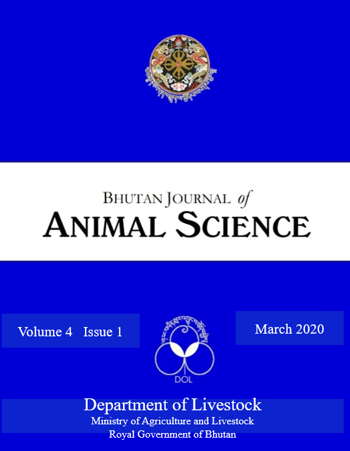Comparison of growth performance of pig sucklers’ fed with creep feed and sow ration
Keywords:
Average daily gain, creep feed, lactating sow, pre-weaning, post-weaning, sucklersAbstract
The study was conducted to compare the overall growth performance of pig sucklers fed with creep feed against current practices adopted in two government pig breeding farms. A total of 100 sucklers each selected for the study were allotted to two treatments viz., creep feeding (T1) and non-creep feeding (T2) through lucky draw. Same number of sucklers from three pig breeds namely Duroc, Large Black and Saddle Back were used in the experiment. The birth weights of pig sucklers’ were recorded on zero day (at birth), on start of feeding creep feed (5th day), and thereafter weighed every three days until weaning period. Post weaning body weight were measured and compared. The feeds fed in both treatments were mixed with effective micro-organism (EM) solution for better digestion. The animals were fed ad libitum. All data gathered were analyzed using t-test. The study revealed that there was no significant difference (p=0.83) in mean body weight at weaning between the two treatments. The mean body weight recorded was 10.48 and
10.56 kg for creep feeding and non-creep feeding respectively. The experiment revealed that creep feeding of sucklers does not have any effect on the growth performance, and it simply adds on to cost of production. Thus, the study concludes that creep feeding of sucklers is not necessary and may discontinue in future.
Downloads
Published
Issue
Section
Categories
License
Copyright (c) 2020 BJAS

This work is licensed under a Creative Commons Attribution 4.0 International License.






